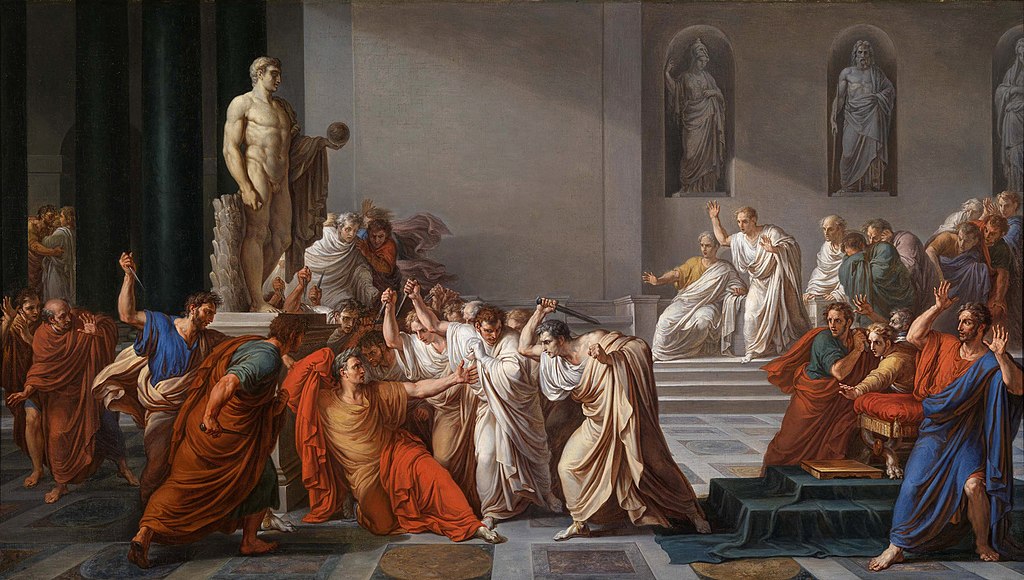 |
| The Death of Caesar (1798) by Vincenzo Camuccini |
The Ides of March (Latin: Idus Martiae, Late Latin: Idus Martii)[1] is a day on the Roman calendar that corresponds to 15 March. It was marked by several religious observances and became notorious as the date of the assassination of Julius Caesar in 44 BC. The death of Caesar made the Ides of March a turning point in Roman history, as one of the events that marked the transition from the historical period known as the Roman Republic to the Roman Empire.[2]
Although March (Martius) was the third month of the Julian calendar, in the oldest Roman calendar it was the first month of the year. The holidays observed by the Romans from the first through the Ides often reflect their origin as new-year celebrations.[citation needed]
Assassination of Caesar
In modern times, the Ides of March is best known as the date on which Julius Caesar was assassinated in 44 BC. Caesar was stabbed to death at a meeting of the senate. As many as 60 conspirators, led by Brutus and Cassius, were involved. According to Plutarch,[19] a seer had warned that harm would come to Caesar no later than the Ides of March. On his way to the Theatre of Pompey, where he would be assassinated, Caesar passed the seer and joked, "The Ides of March are come", implying that the prophecy had not been fulfilled, to which the seer replied "Aye, Caesar; but not gone."[19] This meeting is famously dramatised in William Shakespeare's play Julius Caesar, when Caesar is warned by the soothsayer to "beware the Ides of March."[20][21] The Roman biographer Suetonius[22] identifies the "seer" as a haruspex named Spurinna.
Caesar's death was a closing event in the crisis of the Roman Republic, and triggered the civil war that would result in the rise to sole power of his adopted heir Octavian (later known as Augustus).[23] Writing under Augustus, Ovid portrays the murder as a sacrilege, since Caesar was also the Pontifex Maximus of Rome and a priest of Vesta.[24] On the fourth anniversary of Caesar's death in 40 BC, after achieving a victory at the siege of Perugia, Octavian executed 300 senators and knights who had fought against him under Lucius Antonius, the brother of Mark Antony.[25] The executions were one of a series of actions taken by Octavian to avenge Caesar's death. Suetonius and the historian Cassius Dio characterised the slaughter as a religious sacrifice,[26][27] noting that it occurred on the Ides of March at the new altar to the deified Julius.


No comments:
Post a Comment